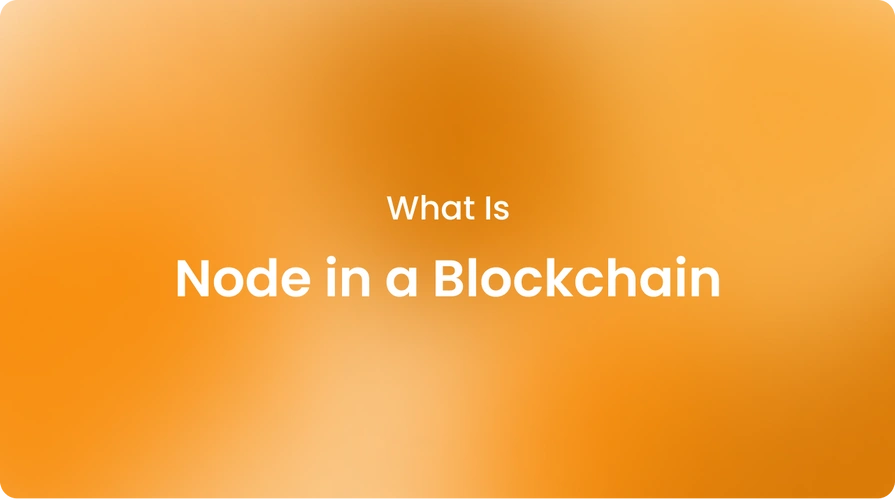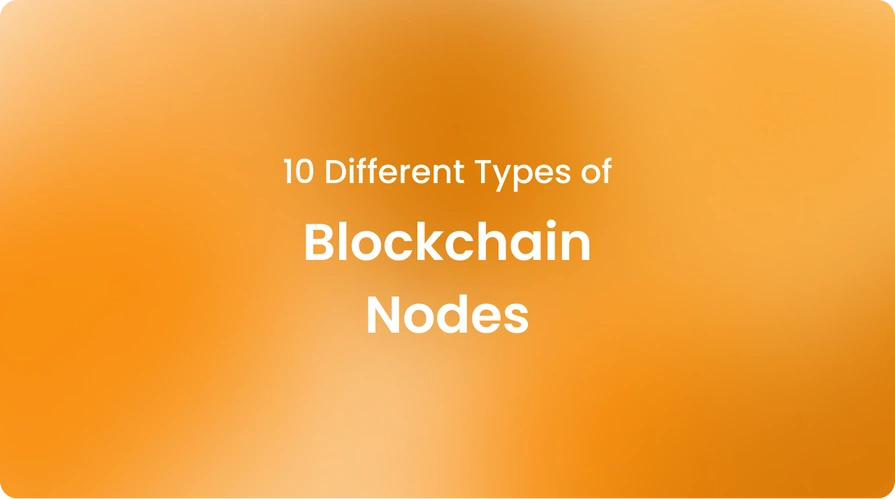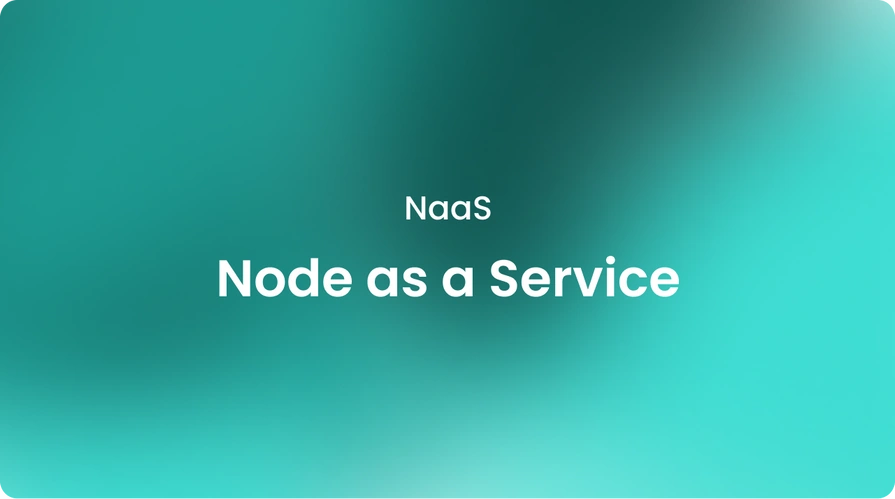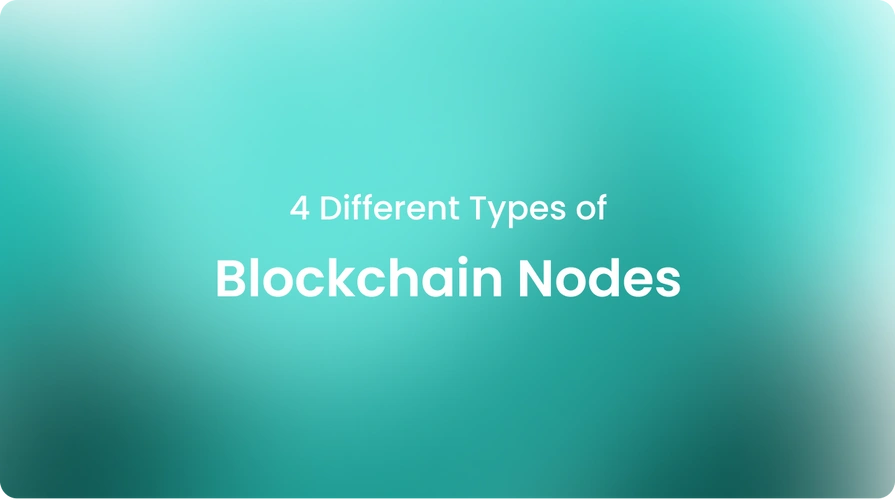Blockchain technology has transformed how we think about currencies, transactions, and decentralized networks with different nodes in the blockchain.
For many, the inner workings of this innovative system remain somewhat mysterious. In this article, we'll explore the unsung heroes that truly power blockchain and keep the entire system secure—the nodes.
Picture a blockchain as a train. A locomotive pulls the carriages along the tracks. In this analogy, the blockchain nodes represent that locomotive—constantly working behind the scenes to validate transactions, link new blocks together, and move the network forward.
In simple terms, a blockchain node is a computer or server that holds a copy of the blockchain public ledger and works to validate transactions on the network. All nodes keep an updated copy of the blockchain, enabling simultaneous broadcasting of transactions to the entire network.
A node in a blockchain does this by verifying the digital signatures attached to transactions before permanently adding them to the shared ledger. Let’s explore more details!
Why are blockchain nodes needed?
Blockchain networks rely on nodes to serve several critical roles:
Record keeping
Nodes store full copies of the transaction ledger, known as the blockchain. This prevents central points of failure and ensures robust data backup across the network.
Transaction processing
Blockchain nodes validate transactions through consensus rules before adding them as permanent blocks. This protects against double spending and confirms the integrity of the ledger.
Decentralization
By involving many independent nodes worldwide, blockchains achieve decentralization without centralized governance. This enhances resilience, security, and censorship resistance.
Network connectivity
Nodes facilitate peer-to-peer communications between participants. Protocols relay transactions and blocks to keep synchronized ledgers across the decentralized network.
Blockchain technology would not function in its present form without nodes powering various technical and economic roles behind the scenes. They play a crucial role in enabling the core properties of security, decentralization, and the overall operation of blockchain networks at scale.
How many nodes are there in the blockchain ecosystem?
The number of active blockchain nodes varies significantly, depending on the specific blockchain. Bitcoin globally has over 17,000 validating nodes.
Ethereum currently has around 7,600 active nodes. Other major networks also have thousands of nodes: Ripple 800, Litecoin 1,900, and Stellar around 1,200.
However, the total number of nodes deployed across all public and private blockchains worldwide is much higher. Some reports indicate there are over 100,000 blockchain nodes in operation, including experimental testnets, sidechains, and corporate implementations.
As the blockchain industry grows, so too will the nodes required to maintain these expanding decentralized networks, as they are crucial for the whole system.
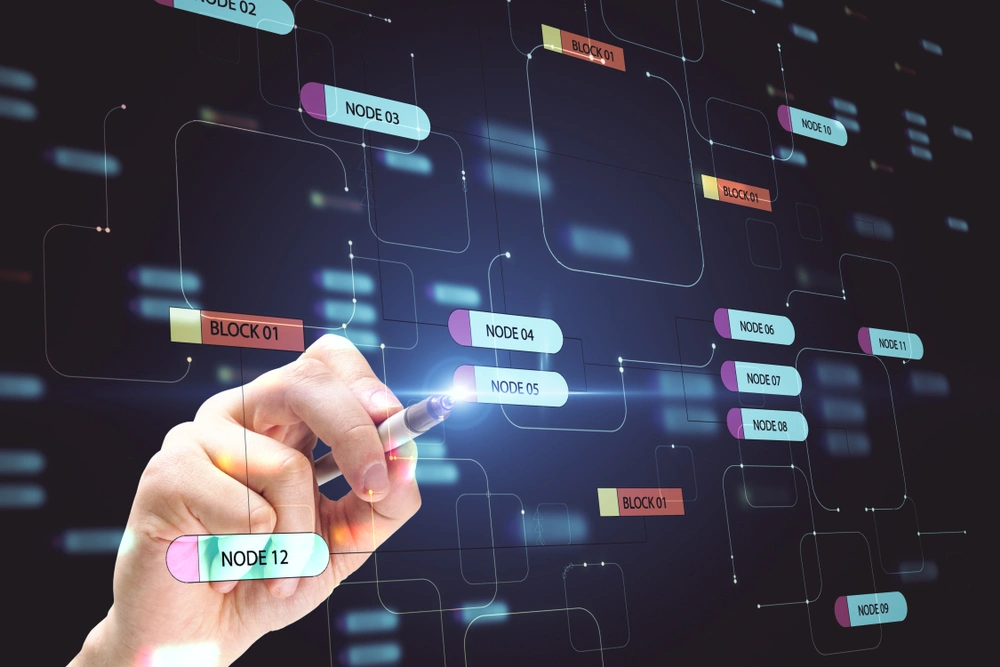
How many nodes does a blockchain need?
There is no definitive number, as requirements vary depending on the transaction load and threat model. However, experts indicate most public blockchains begin to see diminishing returns in terms of security and decentralization with fewer than 100 nodes.
Many suggest networks need thousands, or even tens of thousands, of geographically diverse blockchain nodes to reach a robust level of decentralization.
On the other hand, smaller industrial networks or consortium chains require fewer nodes. Overall, the aim is for no single entity to gain disproportionate control of a network through nodes. As long as that holds, the system remains decentralized, no matter the overall number.
How do blockchain nodes work?
Each node in a blockchain performs various functions to keep it running smoothly in a decentralized manner. There are different types of nodes that work together.
Full nodes download and store the complete blockchain history, verifying every transaction and block. To stay in sync, they constantly communicate with peers in the network.
Light nodes, on the other hand, store only the block headers and rely on full nodes to validate transactions. Nodes also help to reach consensus on the blockchain ledger through mechanisms such as proof-of-work or proof-of-stake.
In PoW blockchains like Bitcoin, miner nodes process transactions and bundle them into blocks by solving complex cryptographic puzzles. The node that solves the puzzle first can add the validated block to the chain and receive block rewards.
Other blockchain nodes then verify the block before accepting it into their locally stored copy. This process repeats itself to continuously update the decentralized blockchain across all participating nodes in a trustless manner.
What are the types of blockchain nodes?
As mentioned earlier, there are different types of blockchain nodes based on their functions: full nodes, lightweight nodes, miner nodes, and more.
Full nodes have the heaviest data requirements as they host the complete blockchain, while light nodes have minimal resource usage. In addition to running full-node software, miner nodes require specialized mining hardware.
Companies such as Cryptobunq provide node-as-a-service (NaaS) solutions that allow users to easily set up and operate blockchain infrastructure like nodes without complex setup and maintenance requirements.
Cryptobunq is a crypto-friendly digital bank offering various services in crypto and blockchain, including a crypto exchange API, crypto checkout and invoicing, and more. Businesses can utilize Cryptobunq's APIs and nodes to build innovative blockchain applications with reliability.
Can I own a node on the blockchain?
While running a fully independent node in a blockchain provides users with full control over validating transactions and participating in consensus, it also requires intensive resources and expertise that not all may have access to.
However, users still have several options to participate in node operations:
Join a mining pool
Pools allow users to contribute hash power and split block rewards proportionally to their share, eliminating the need for specialized miners. Larger pools have higher chances of finding blocks.
Use a node-as-a-service (NaaS)
Platforms such as Cryptobunq's NaaS allow users to deploy and manage blockchain nodes through fully managed APIs without requiring a complex infrastructure setup.
Back nodes on crowdsourced networks
Some chains crowdsource nodes from users, paying operators to run critical services.
Invest in node hosting companies
Purchase shares to help businesses provide node infrastructure. This helps distribute decentralized models.
While direct node ownership may not be practical, these participatory measures provide access and rewards that are closer to actual node operations, with fewer barriers. NaaS, in particular, has significantly facilitated wider participation through simplified integration.
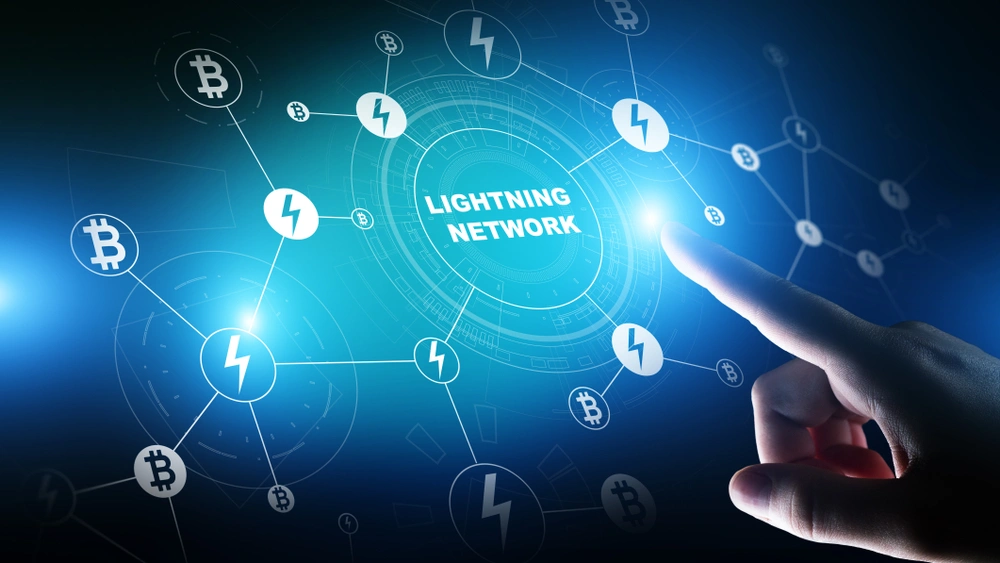
How do I buy nodes?
There are a few options available for individuals and businesses to participate in blockchain networks through nodes.
Here are some of them:
Run a node locally
On their own servers and infrastructure, users can download node software and maintain full blockchain nodes. This requires technical skills and dedicated computing resources.
Use cloud-hosted nodes
Platforms like Cryptobunq provide cloud-based blockchain node infrastructure through APIs, avoiding the need for local setup and maintenance.
Buy into mining pools
Participating in large mining pools allows users to process transactions and earn rewards proportionate to their contributed resources without requiring specialized crypto mining hardware. However, this has centralization concerns.
Utilize node-as-a-service
Built-in solutions like Cryptobunq's NaaS simplify the node deployment process through fully managed APIs and nodes in the cloud. Businesses can integrate blockchain services easily without operating their own nodes.
Blockchain nodes are the backbone infrastructure that powers the validated, decentralized networks that support various blockchain networks and decentralized applications.
Understanding their functions and roles helps us appreciate the robust architecture that sustains this innovative technology at its core. With improved usability from solutions such as node-as-a-service, more participants can leverage nodes to build on blockchains.
The bottom line
Nodes in blockchain form the backbone infrastructure supporting blockchain networks in a decentralized manner. They store blockchain data, validate transactions through consensus, and propagate changes across peers.
Individuals can participate in blockchain operations through NaaS or by self-hosting with the proper resources and skills. With increasing demand for decentralization, opportunities for node ownership will likely expand in the future.
This could lower barriers to participation while strengthening blockchain networks, as exemplified by Cryptobunq's services. Cryptobunq is a one-stop-shop crypto service provider that you can trust for node-as-a-service solutions as well as other crypto and blockchain services. Contact us today!









